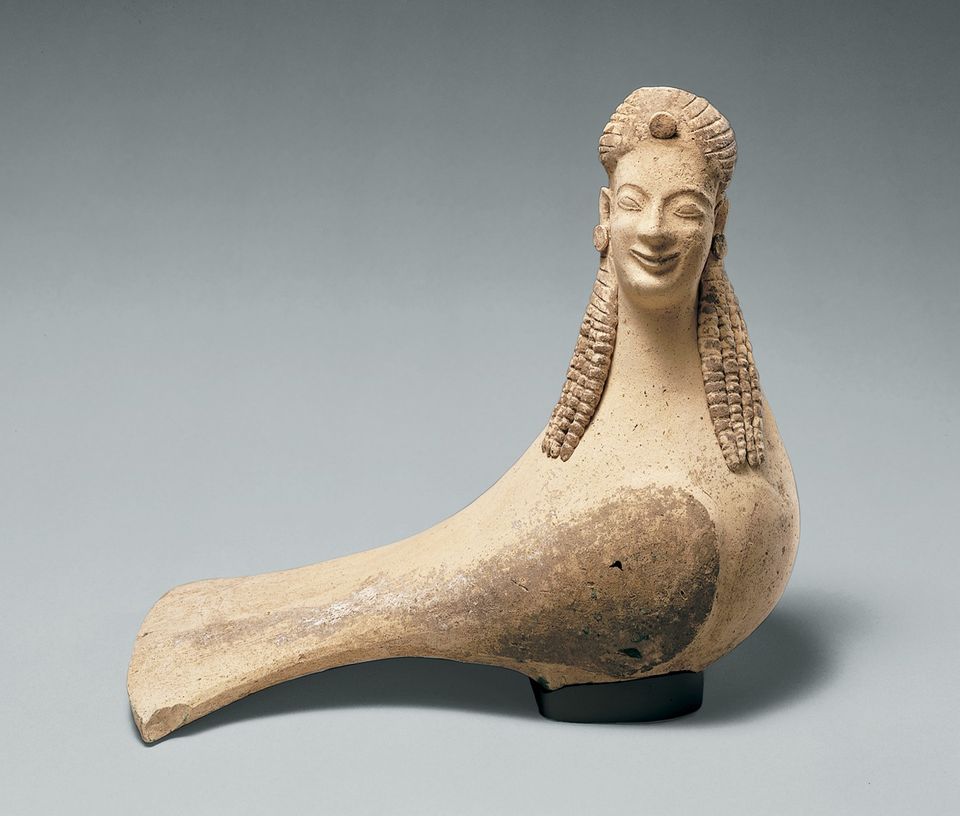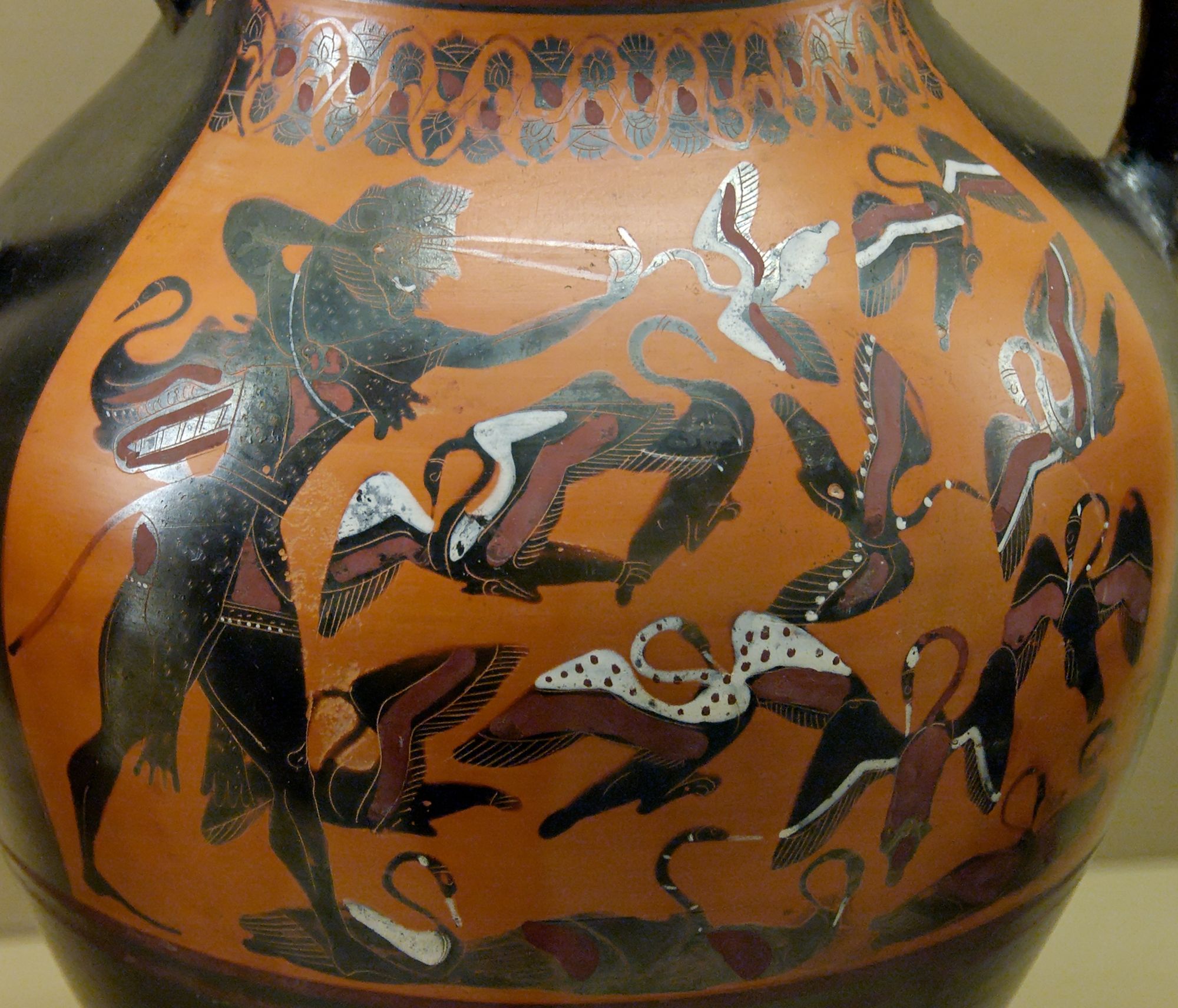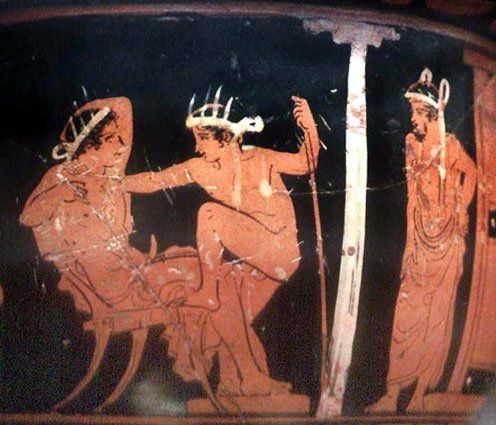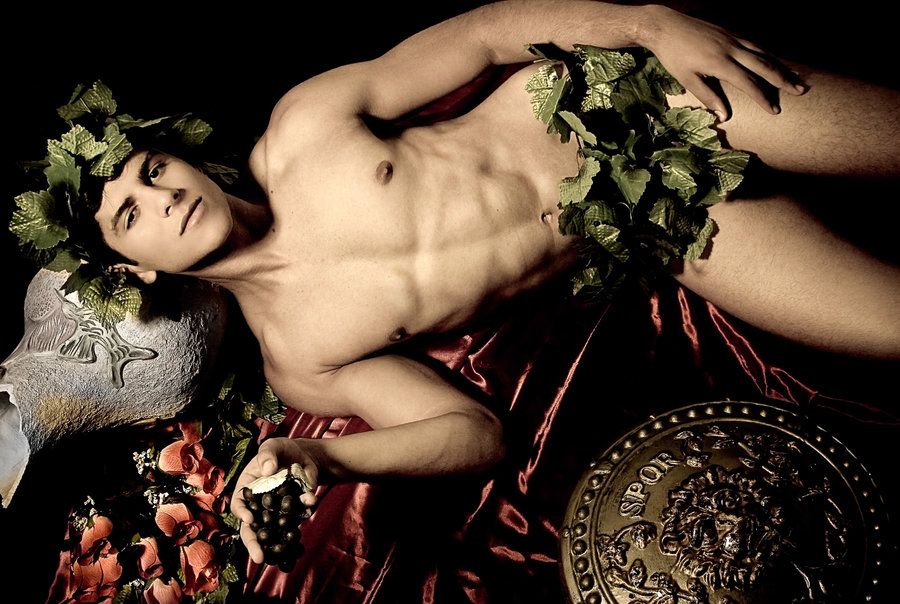Birds of Greek Mythology

It's #NationalBirdDay so I want to talk about birds in Greek mythology. There are many stories from ancient Greece about mythological birds and half-bird creatures, some of which I'm going to introduce here.
Birds of Ares
The Birds of Ares (Ornithes Areioi in ancient Greek) were a flock of arrow-feathered birds which the god had set to guard his sacred shrine on the Black Sea island of Dia, also called Ares' Island. It had been built by the Amazons, his daughters. The birds were encountered by the Argonauts in their quest for the Golden Fleece. The heroes raised their shields as a defence against the birds' deadly volleys of arrows and with a clash of shield and spear scared them away.

The Birds of Ares were sometimes identified with the Stymphalian Birds driven off by Herakles (see below).
Griffins
The Griphoi or Griffins is a hybrid creature with the head and wings of an eagle and the body of a lion. They guard a treasure of gold by the border to Hyperborea. Griffins were popular decorations in ancient Greek art, for example the helm of the statue of Athena Piraeus:

Harpies
The Harpyiai or Harpies were depicted as winged women, sometimes with ugly faces, or with the lower bodies of birds. They were the spirits of sudden, dangerous gusts of wind and were sent by the gods to snatch up people and things from the dark earth. A missing person was said to have been snatched by the Harpies.

Hippalektryon
The Hippalektryon, literally "horse-cock" or "horse-rooster" (hippos = horse, alektryôn = cock) is a hybrid creature with the head and sometimes forelegs of a horse and the wings, tail and back-legs of a male chicken. @sigeel drew them most beautifully, tended to by Demeter and Persephone.

Phoenix
This bird is still well-known today through the saying "rising like a Phoenix from the ashes". It was said to resemble an eagle, with feathers partly red and partly golden. The Phoenix flies from Arabia to the Temple of the Sun (Ra) in Heliopolis in Egypt every 500 years to bury its father encased in myrrh. And there only is a father because the Phoenix begets itself. The tale of the Phoenix actually rising from its own ashes is related in a 4th century CE Roman text called "The Phoenix":
...the pyre conceives the new life; Nature takes care that the deathless bird perish not, and calls upon the sun, mindful of his promise, to restore its immortal glory to the world. Straightway the life spirit surges through his scattered limbs; the renovated blood floods his veins. The ashes show signs of life; they begin to move though there is none to move them, and feathers clothe the mass of cinders. He who was but now the sire comes forth from the pyre the son and successor; between life and life lay but that brief space wherein the pyre burned. His first delight is to consecrate his father's spirit by the banks of the Nile and to carry to the land of Aegyptus (Egypt) the burned mass from which he was born.

Sirens
The Seirenes or Sirens were depicted as birds with either the heads or entire upper bodies of women. They are well-known from the Odyssey for their enchanting song.
Lovely Terpsichore, one of the Muses, had borne them [the Sirens] to Akheloos, and at one time they had been handmaids to Demeter's gallant Daughter [Persephone], before she was married, and sung to her in chorus. But now, half human and half bird in form, they spent their time watching for ships from a height that overlooked their excellent harbour; and many a traveller, reduced by them to skin and bones, had forfeited the happiness of reaching home.
The shape of the Sirens, a bird with a woman's head, was popular as a vessel for perfumes and cosmetics.

Stymphalian Birds
The Stymphalian Birds were a flock of man-eating birds of prey which lived around Lake Stymphalis in Arkadia on the Peloponnese. Herakles had to deal with them for the sixth of his twelve labours:
Herakles was stumped by the problem of driving the birds out of the woods, but Athena got some bronze noise-makers from Hephaistos and gave them to him, and by shaking these from a mountain adjacent to the lake frightened the birds. Not enduring the racket, they flew up in fear, and in this manner Herakles reached them with his arrows.

The Stymphalian Birds were sometimes identified with the arrow-shooting Birds of Ares that were encountered by the Argonauts (see above).
According to Pausanias' Description of Greece there was also an old sanctuary of Stymphalian Artemis in Stymphalos and near the roof of her temple the Stymphalian birds had been carved.
Which is your favourite birb story from mythology?
Images
The Piraeus Athena, bronze statue, Archaeological Museum of Piraeus, ancientrome.ru
The Harpy Tomb relief, flickr.com
Linda Sejic's Horse Chickens, Tumblr.com
Phoenix fresco from Pompeii, Museo Archeologico Nazionale di Napoli, ancientrome.ru






